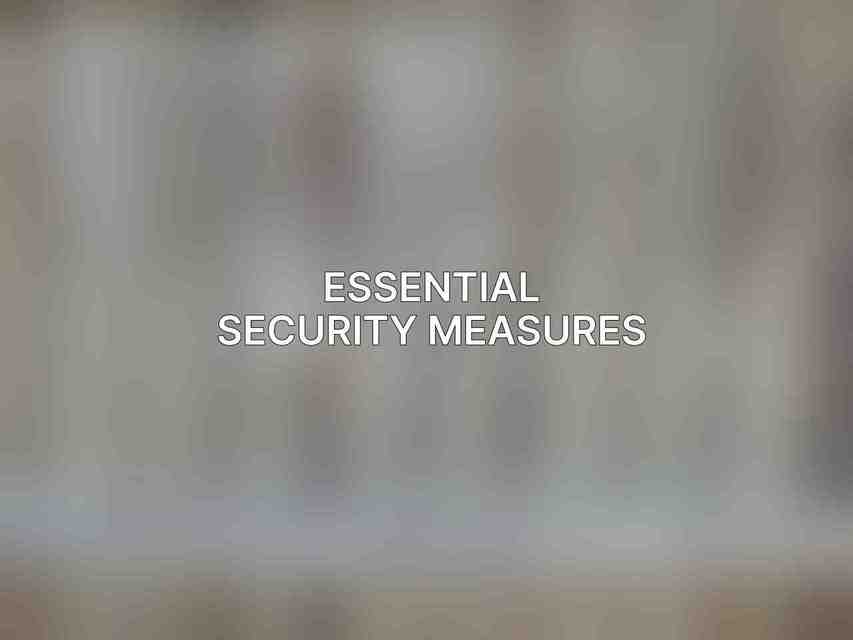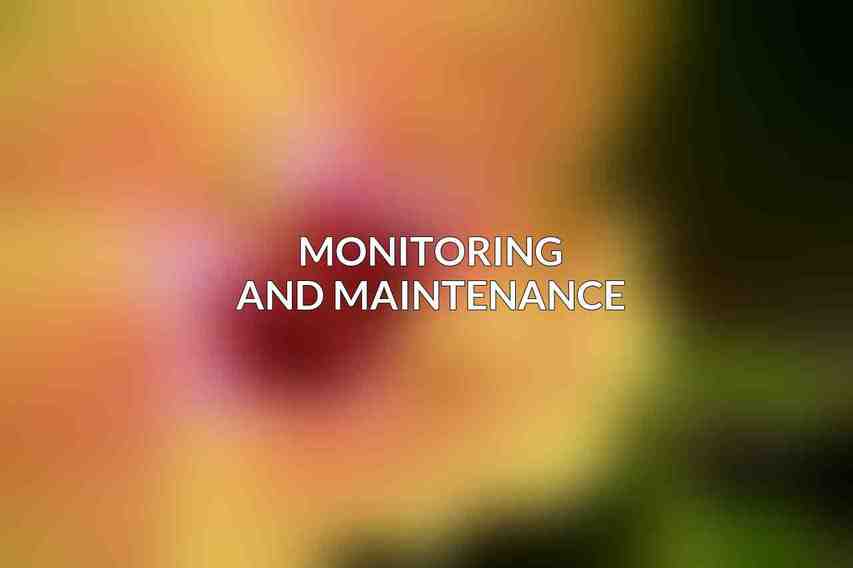Today, web security is a critical aspect of building a successful online presence. Understanding Web Security Threats is essential for website owners, developers, and designers. Threats like data breaches, malware infections, and cyber attacks can severely impact the integrity and reputation of a website. Therefore, implementing robust security measures is crucial to protect sensitive information and maintain a trustworthy online environment.
The Importance of Secure Website Design cannot be overstated. A secure website not only protects user data but also safeguards the website owner from legal liabilities and financial losses. Beyond that, secure websites build trust with users and enhance the credibility of the brand. By prioritizing security from the initial design stages, website owners can prevent potential security breaches and maintain a positive user experience.
Implementing security measures brings forth several Benefits:- Enhanced protection against cyber threats- Improved search engine rankings due to SSL encryption- Greater user trust and confidence in the website- Compliance with regulatory requirements such as GDPR and PCI DSS
Essential Security Measures

A. Secure Socket Layer (SSL) Certificates
Securing communication between a user’s web browser and the website server is paramount. SSL Certificates encrypt this data, ensuring that sensitive information like passwords and credit card details are transmitted securely. Benefits of SSL certificates include:1. Data encryption to protect user privacy2. Establishing trust with users through the padlock symbol in the browser3. Boosting SEO rankings as Google favors HTTPS websites.
There are different Types of SSL Certificates, ranging from single-domain to wildcard and EV certificates. Installing an SSL certificate involves generating a Certificate Signing Request (CSR), purchasing the certificate, and configuring it on the web server. Websites that handle sensitive data or conduct online transactions must prioritize SSL implementation.
B. Web Application Firewall (WAF)
A Web Application Firewall (WAF) acts as a barrier between a website and external threats, filtering malicious traffic and preventing attacks like SQL injection and cross-site scripting. The functionality and benefits of a WAF include:1. Monitoring and filtering HTTP traffic in real time2. Protection against known vulnerabilities and zero-day attacks3. Custom rules configuration to meet specific security requirements.
Different Types of WAFs are available, such as cloud-based and on-premise solutions. When implementing a WAF, considerations such as false positive rates, ease of maintenance, and scalability need to be taken into account to ensure effective protection against web-based threats.
C. Cross-Site Scripting (XSS) Protection
Cross-Site Scripting (XSS) attacks are prevalent on the web and can compromise user data and website integrity. Understanding XSS attacks is crucial to implementing effective mitigation techniques. Common mitigation techniques include input validation, output encoding, and security headers like Content Security Policy (CSP). Best practices for XSS prevention involve:1. Sanitizing user input to remove malicious scripts2. Implementing strict content security policies3. Educating developers on secure coding practices to prevent XSS vulnerabilities.
D. Content Security Policy (CSP)
A Content Security Policy (CSP) is a security standard that helps prevent cross-site scripting and data injection attacks by defining trusted sources of content on a website. Understanding what CSP is and its benefits is essential for maintaining a secure web environment. Key benefits of CSP include:1. Mitigating XSS attacks by restricting content sources2. Preventing unauthorized data access and manipulation3. Enhancing website security posture by enforcing a content security policy.
Implementing a CSP involves defining a policy in the website’s HTTP header or meta tags to control allowed content sources. By configuring a CSP, website owners can mitigate the risk of XSS attacks and enhance overall web security.
Secure Development Practices
A. Input Validation and Sanitization
Input Validation ensures that data entered by users meets specific criteria, reducing the risk of injection attacks and other security vulnerabilities. Common input validation techniques include input whitelisting, blacklisting, and regular expressions. Best practices for data sanitization involve:1. Validating input at both client and server sides2. Sanitizing input to remove potentially harmful characters3. Implementing form validation and error handling to secure data inputs.
B. Authorization and Authentication
Authorization and Authentication mechanisms play a vital role in controlling access to sensitive data and functionalities within a web application. Strong authentication mechanisms, such as complex passwords and multi-factor authentication, are crucial for verifying user identities. Two-factor authentication (2FA) and Role-Based Access Control (RBAC) are effective measures to enhance security:
- Two-Factor Authentication (2FA) adds an extra layer of security by requiring users to provide two forms of identification.
- Role-Based Access Control (RBAC) restricts user permissions based on designated roles and responsibilities, limiting potential security risks.
C. Session Management
Effective Session Management is essential for maintaining secure user sessions and preventing unauthorized access to sensitive data. Different session management techniques, like session tokens and timeout controls, help mitigate session hijacking risks. Best practices for secure session handling include:1. Using secure cookies for session identification2. Implementing session expiration mechanisms3. Encrypting session data to protect sensitive information.
Awareness of common session hijacking techniques, such as session fixation and session sidejacking, empowers developers to implement robust session management practices and secure user sessions effectively.
Monitoring and Maintenance

A. Regular Security Audits
Conducting Regular Security Audits is imperative to identify and address security vulnerabilities in a timely manner. Internal and external security audits help assess the website’s security posture and compliance with industry standards. Employing Vulnerability Assessment Tools automates the scanning process and identifies potential weaknesses that require remediation.
B. Threat Monitoring
Threat Monitoring involves continuous surveillance of network traffic and system activities to detect and respond to potential security incidents. Intrusion Detection Systems (IDS) and Security Information and Event Management (SIEM) systems are instrumental in monitoring and alerting security teams about suspicious behavior and anomalies.
C. Software Updates and Patches
Regularly applying Software Updates and Patches is essential to address known security vulnerabilities and protect web applications from exploitation. Delayed patching can expose websites to cyber threats and exploitation. It is paramount to prioritize timely updates and adopt recommended patching strategies to bolster website security.
Best Practices for Security-Conscious Web Design
- Use Strong Passwords and Password Management: Encourage users to create complex passwords and implement password management tools to enhance security.
- Use a Content Management System (CMS) with Security Features: Choose a CMS platform that prioritizes security and regularly updates its core to patch vulnerabilities.
- Minimize External Dependencies: Reduce reliance on third-party scripts and plugins that may introduce security risks to the website.
- Be Aware of Social Engineering Attacks: Educate users and website administrators about common social engineering tactics and how to identify and mitigate them.
- Educate Users About Online Security: Raise awareness among users about the importance of online security practices, such as avoiding phishing emails and practicing safe browsing habits.
By implementing these secure website design principles and best practices, beginners can fortify their websites against potential threats and create a safe browsing experience for users. Prioritizing security from the outset of web development is key to building trust, protecting data, and ensuring the longevity of an online presence.
Frequently Asked Questions
What is website security?
Website security refers to the measures taken to protect a website from cyber threats and malicious attacks.
How can beginners improve website security?
Beginners can improve website security by using strong passwords, keeping software up to date, implementing SSL encryption, and regularly backing up data.
Why is website security important?
Website security is important to protect sensitive data, maintain user trust, avoid financial loss, and prevent damage to reputation.
What are some common website security vulnerabilities?
Common website security vulnerabilities include SQL injection, cross-site scripting (XSS), broken authentication, and insecure direct object references.
How can beginners incorporate secure design principles into their websites?
Beginners can incorporate secure design principles by using HTTPS, validating user input, implementing strong password policies, avoiding unnecessary plugins, and regularly auditing security measures.
